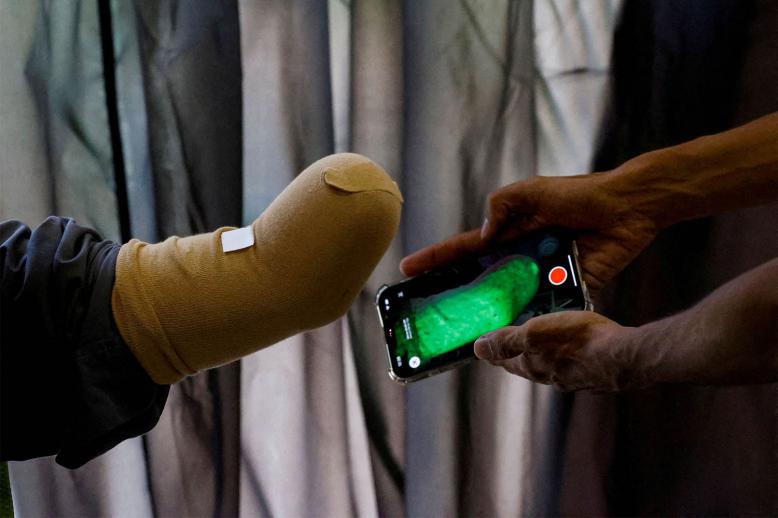Shifts across cultures are affecting image of women
It seems likely that anyone anywhere alive today born in 1955 or earlier may remember where he or she happened to be when US President John F. Kennedy was assassinated in Dallas on November 22, 1963.
The mid-20th century was an age of television as ours is an age of the internet. Television shots of the slow open-car procession, the moments of confusion, the hysterical speeding-up, the grim announcement, as well as that image of Lyndon Johnson being sworn in on Air Force One with Jackie Kennedy in her bloodstained skirt standing beside him and then the three days or so without other news, the ceremony at Arlington with the small Kennedy children — such pictures are imprinted on humanity’s collective memory.
A generation later, the destruction of the towers of the World Trade Centre in New York had a similar effect. If you were born in, say, 1993 or earlier, you may well remember where you happened to be on 9/11 in the same way the older crowd remembers the November day in 1963.
Little more than a year before Kennedy’s assassination, the death of another and, at the time, even more iconic American imprinted itself upon the world’s consciousness. This was Marilyn Monroe’s departure due to an overdose of pills, most likely accidental, in August 1962.
Marilyn Monroe was a good actress, especially in light comedy and certainly a good-looking woman but Hollywood at the time had perhaps a dozen female stars of whom the same might be said or for whom even greater claims might be made. They did not become icons, emblematic figures whom people secretly prayed to or whose photographs might even hold the gift of healing. Monroe’s beauty was a relatively usual kind of fair-haired female beauty, even if augmented and exaggerated by artificial means.
The screen goddess had something of the qualities, to the Western world, of the girl-next-door. Beyond the West, the very blondeness, however improved, became a kind of symbol of the ordinary — or an ideal of the ordinary. This suited a world still in recovery from global war and prospering through the very means of that recovery.
Some years ago, I had lunch with a great female photographer, the late Eve Arnold. She had been a close friend of Monroe’s. She photographed her frequently, clothed and nude. Her account was especially fascinating because she herself was aware of, but wholly indifferent to, Monroe’s sex appeal.
“Marilyn was a flat-footed, broad-based Polish kid,” she told me, “but two things were unique to her. She lost weight on camera. Nearly everyone else gains it. This is one of the reasons fashion models are so unhealthily skinny. She lost weight because faced with a lens she uncoiled like a cobra rising from its basket. Her concentration on the lens was absolute. She loved it.
“Then, while in no sense hirsute, she was covered all over, face, skin, everywhere, with very fine light, gold, downy hair. You could hardly see it but the tiny filaments did take the light and the lens picked this up.
“So whether you shot her in colour or in black-and-white, the developed picture had a kind of radiance, a glow about it. It was unearthly. And when the session was over there was this nice, ordinary, Polish broad again.” (Broad is out-of-date, indeed unacceptable, slang for woman).
Marilyn Monroe was the iconic female image of the mid-20th century. She shared this role with Elizabeth Taylor, perhaps, and Jacqueline Kennedy. The artist Andy Warhol, who marketed icons, kept painting these two women. He also painted Monroe. But she comes to mind these days because of important cultural shifts. The internet age, as distinct from the ages of film and television, occasions and accompanies a change in Western attitudes towards women.
While Western culture is, in this respect, becoming more conservative, Middle Eastern culture is becoming less so. Even five years back, Saudi Arabia was the most conservative country in the world in terms of a woman’s ability to function openly in contemporary society. Women there had long worked behind the scenes and professionally. They were not relegated to traditional family roles but they were kept obscure.
As their economic contribution grew, however, it required recognition. They had to be able to function more normally in everyday life: driving, for instance. In the West, especially in the United States and Britain, the public sexualisation of women is rapidly becoming taboo.
Figures such as Marilyn Monroe are as nostalgic, as out-of-date, as limousines with walled-off compartments for chauffeurs. They belong to a generation of grandparents or even great-grandparents, not parents. Where out-of-date attitudes persist, female professionals stamp on them. Women speak out or go to court over lapses in personal or professional behaviour.
It is clear that an immense cultural shift is taking place in what is loosely called the West. Women are in revolt against being sexualised, objectified, treated as objects of desire rather than people.
Even within more conservative sections of society, those informed by traditionalist Jewish, Christian or Islamic teaching, women are coming under the same influences and indeed helping to create them. They are in revolt at being over-protected, hidden away, treated as instruments for reproduction only.
In our time, even Hollywood is turning its back on actors, directors or producers whose sexual conduct is exploitative, or even, in a newly applied and perhaps unintentionally comic term, “inappropriate.” Sexual misconduct, thanks partly to the internet, has no statute of limitations. Old offences are still offensive. When I lived in New York in the 1980s, Bill Cosby was middle America’s icon of family values, all the more so for being African-American. Now 80, he is about to be sentenced to prison for sexual crimes.
One of the ironies of the shift is that Marilyn Monroe did have love affairs with both governing Kennedy brothers, with Bobby as well as Jack. Today, there is outrage that a sitting president may even be suspected as having had an affair with a woman who starred in pornographic movies and who may or may not have been bribed by his lawyer to keep quiet about things.
Ted Kennedy’s political career survived, narrowly, the death of a woman he may have been dating when the car in which they were travelling late at night fell into a creek. She drowned. Ted escaped. Does anyone believe he would have survived this, politically, today?
There was an “alternative society” chant in the 1960s that is worth attending to still. “When the sound of the music changes, the walls of the city shake.”
There will always be love songs but their orchestration is different now. So are locations where they may be played. The workplace is out. Even Hollywood, for more than a year now, requires a distance to be maintained between professional and personal behaviour. Who knows, this may even apply to porn stars.
Lord Grey Gowrie is a former British politician and Conservative minister. He has had a number of high-profile posts across a variety of disciplines.
This article was originally published in The Arab Weekly.





